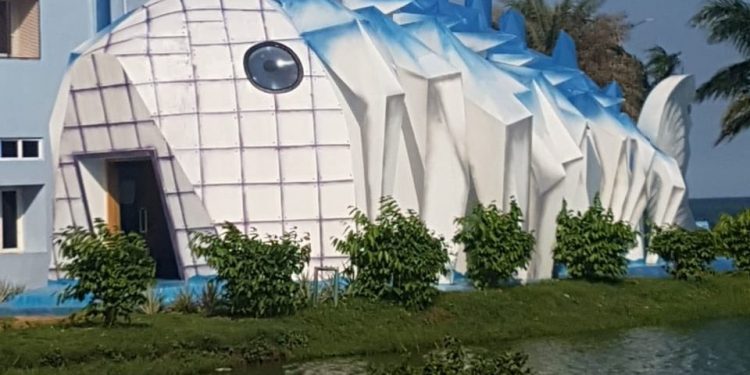Bhubaneswar: The long-awaited Odisha’s first ‘Fish Museum’ has finally come up near Badkul in Khurda district on the western side of Chilika lake.
Chilika the largest brackish water lagoon in Asia is a home to hundreds of varieties of fish. The museum will go a long way in providing information to tourists about the different variants of aquatic species found in the lake.
According to official sources, there are 330 varieties of fish and 12 types of prawns available in the lake. The availability of such huge varieties of fish is a boon for over two lakh fishermen living in 132 villages close to the lake.
Built in conventional reinforced cement concrete (RCC) structure, the museum has a fish-like structural design. It is said that the museum’s architectural beauty will one day prove to be a major draw for tourists from across the globe. The museum will also showcase the fact that 20 per cent of the total seafood exports from Odisha happen through Chilika.
However, the doors of the ‘Fish Museum’ will not open till the threat of the COVID-19 pandemic subsides. This information was given by chief executive CDA, Sushant Nanda informed in a tweet.
For the development of Chilika lake, which is listed as a tentative UNESCO World Heritage site, both the Odisha and the Central governments have taken up several projects. It has recently been discussed that in the first phase steps will be taken to preserve the lake’s biodiversity and to rehabilitate the local people with earning opportunities.
As per the plan drawn out, the Chilika Development Authority (CDA) will take steps to get rid of the illegal prawn gheries that are flourishing within the lake. Also The Odisha Tourism Department will develop the nearby islands into natural tourist spots.
CDA sources said, more than 160 square kilometres of illegal gheries have been destroyed from the lake in the last three years. This move has had a favourable impact on the lake. The return of the Irrawaddy dolphins to Chilika is a positive sign that the environmental situation around the lake is improving.
Chilika is also home to 37 types of reptiles and the safe breeding haven for over 60 varieties of migratory birds.
PNN






































